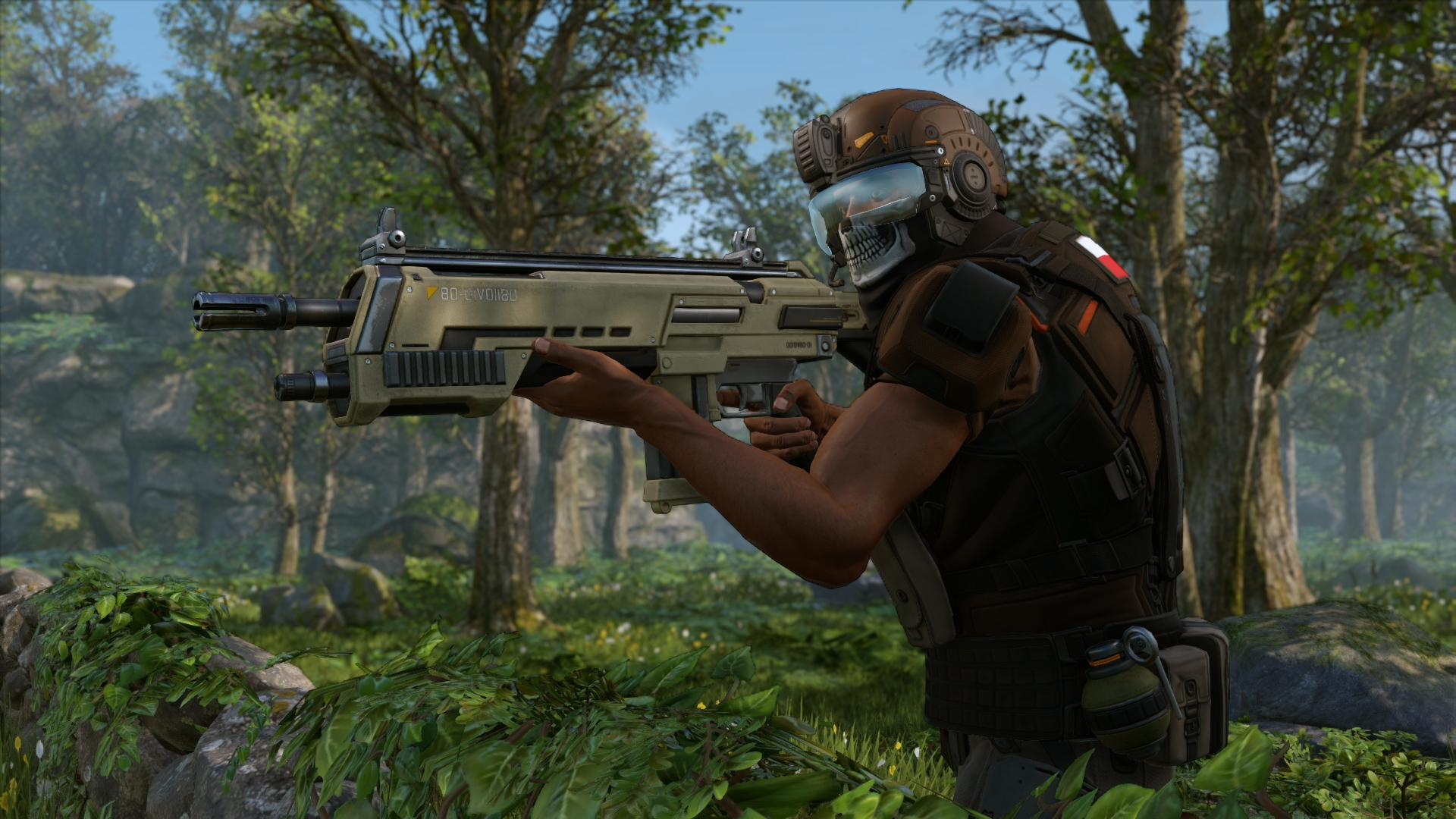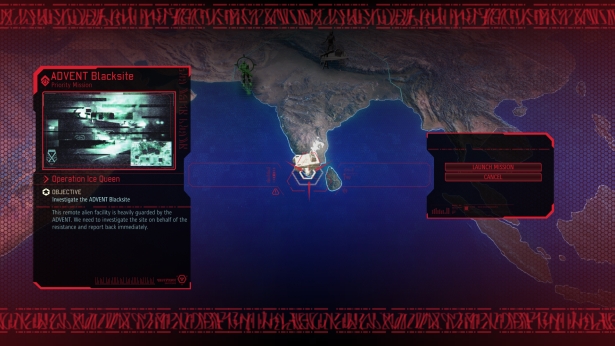Earth has changed. Twenty years have passed since world leaders offered an unconditional surrender to alien forces. XCOM, the planet’s last line of defense, was left decimated and scattered. Now, in XCOM 2, the aliens rule Earth, building shining cities that promise a brilliant future for humanity on the surface, while concealing a sinister agenda and eliminating all who dissent from their new order.
Only those who live at the edges of the world have a margin of freedom. Here, a force gathers once again to stand up for humanity. Always on the run, and facing impossible odds, the remnant XCOM forces must find a way to ignite a global resistance, and eliminate the alien threat once and for all.
- XCOM ON THE RUN: Take command of the Avenger, an alien supply craft converted to XCOM’s mobile headquarters. New open-ended gameplay lets you decide where to guide your strike team, how to grow popular support, and when to combat enemy counter-operations.
- RECRUIT RESISTANCE FIGHTERS: Five soldier classes, each with its own skill tree, let you create specific soldiers for your tactical plan.
- TACTICAL GUERRILLA COMBAT: New gameplay systems offer more tactical flexibility in combat. Use concealment to ambush enemy patrols. Loot enemies for precious gear and artifacts. Rescue VIPs and save fallen comrades by carrying them to the extraction point.
- A NEW BREED OF ENEMY: A diverse cast of enemies from powerful new alien species to the ADVENT, enforcers of the alien regime, offer a distinct tactical challenge.
- RESEARCH, DEVELOP AND UPGRADE: Configure and build rooms on the Avenger to give XCOM new capabilities on the battlefield. Use your Scientists and Engineers to research, develop and upgrade weapons and armor to fit your preferred tactics.
- EACH MISSION IS A UNIQUE CHALLENGE: Go on missions around the world, from wildlands to the heart of the alien-controlled megacities, to the depths of alien installations. There are virtually infinite combinations of maps, missions and goals.
- CREATE CUSTOM MODS: Community-focused tools allow you to create your own campaign, tactical gameplay, aliens, classes, strategy game features, and share within the Steam Workshop.
- ENGAGE IN HEAD-TO-HEAD MULTIPLAYER: Mix-and-match squads of humans and aliens and battle head-to-head on randomly-generated maps.

In [u]XCOM: Enemy Unknown[/u], we fought hard to save a world – pretty much like the world we know today. [u]XCOM 2,[/u] and the expansion [u]XCOM 2: War of The Chosen[/u], fast forward us 20 years to a time long after the first war was lost and the world has changed. How did the Firaxis team first envision this enslaved new world? We asked Chris Sulzbach, Art Director for [u]War of the Chosen[/u], and Aaron Yamada-Hanff, Lead Concept Artist, to give us a quick tour of a typical abandoned city you now navigate in the game.
Let’s start with the cities that were first assaulted by the aliens in [u]Enemy Unknown[/u]. Were there specific cities – or aspects of cities – you looked at as a guiding light for the initial designs?
Chris S. No specific cities were referenced. We looked at a lot of what makes a city look “lived in” like paved over streets, graffiti, concrete repairs, and just took it from there. We wanted to make it look like it could remind you of any city that you’d ever visited.

Now, building off that, how did you look to tear down and degrade those cities 20 years in? Did you look to real world examples of deteriorating cities?
Chris S. Since the fog pods emit a gas that suffocates organic matter, using cities that were reclaimed by nature wasn’t really an option. We had a Pinterest board that I shared with our concept team and on that we would look at many different dilapidated cities, abandoned rooms and warehouses, and places forgotten in time. These gave us a good direction to go off of as if the residents of the city just vanished but really we all know they were gassed and turned into the Lost.
How was concept art used to tell the story of what happened in the cities first attacked by the aliens, but 20 years later?
Chris S. Because we wanted these spaces to give you a feeling of returning to the lost cities from [u]Enemy Unknown[/u], we actually painted over some those original interiors and gave them the abandoned city treatment as a guide for keeping the same vibe. For the Fog Pod impact sites and the non-Lost humans killed in the initial attack, we referenced the photos from the Pompeii eruption to get a sense of what a sudden overtaking of hot gas looked like. The bodies around the fog pods have unique faces differentiating them from the Lost and look more human and pained. We wanted the player to feel for them if they got a glimpse of them in a glam cam.

What are some of the qualities that a concept artist needs when looking to create art for a game – and, specifically, [u]XCOM[/u] games?
Aaron YH. Given that concept artists are visual problem solvers I think it’s important to be consistently inquisitive; repeatedly asking questions to isolate problems and subsequently asking follow-up questions to determine whether the resulting solutions are adequately answering those initial questions. Have enough options been explored? Does an idea create other unforeseen problems? Is the final result helping find meaningful solutions for the game itself? It’s a continuous analytical process that requires a lot of patience and persistence through many changes and countless revisions. Because game development is a collaborative process, clarity is particularly important as an idea or asset is developed and moved through the pipeline.
For [u]XCOM[/u] specifically I’d add versatility to the list of necessary qualities. Because our team on [u]XCOM[/u] is relatively small, the concept team has picked up certain skills along the way to make visualization more efficient and to be able to help out other departments when necessary. In recent years, that’s included implementing a more 3D-intensive process, as well as learning how to use the game engine itself to develop images and assets that get us as close as possible to seeing our work in the game.

Can you give one example, specific to [u]XCOM[/u]’s environment, where you had to do multiple revisions before you hit upon the solution? And can you give an example how that process has changed since you started with a more 3D-intensive process?
When we designed interiors for the restaurant in the abandoned city we did a number of experiments to see what treatment worked best. With the muted palette of the abandoned city, we wanted to explore spaces that had a more vibrant color palette and wilder use of texture in addition to spaces that had a more subtle use of color.
In these concepts we exported existing level designs from the engine and painted over the shot, modeling extra pieces when necessary. [u]XCOM[/u] relies so much on the grid that we always have to be aware of how a given visual decision will affect readability from game camera or change design rules. Approaching things in this way helps us make sure we’re concepting in ways that serve the game first, whether dealing with environments (including props and vehicles), weapons, or characters.
We also explored concepting exclusively in the game engine by taking assets that we already had, arranging them in ways that implied more of a narrative, and lighting them dramatically. Later in the process this approach ended up being immensely time efficient. Where painting over a screenshot or making a new illustration might have introduced new assets or unforeseen issues, utilizing the vast library of existing assets allowed us to set a visual bar for the level while staying as close as possible to the game itself.
What is the most indispensable tool you use when creating imagery for [u]XCOM[/u]?
Aaron YH. While we have access to some amazing software that enables us to create polished work in a very short amount of time, I still find myself coming back to pencil and paper to start most of my ideas. The simplicity and immediacy of that medium allows for a low maintenance way of developing an idea. My desk is consistently littered with sheets of paper where I jot down thoughts in the form of sketches. It’s quick and effective, and is absolutely a core element of my working method.

What aspects of the concept art absolutely had to make it over to the final game assets?
Chris S. Both in our game and in real life, types of buildings, like retail stores, share similar features. Every store will have shelves, counters, and other display structures. In the game, we only have to make a couple different shelves which we can use as many times as we need. To create a city that feels real, we have to create several different kinds of stores. To do this, we reuse the same structural assets (shelves, counters, etc) and then focus on creating unique branding (posters, signage, merchandise) for each store.
Are there any pieces / aspects hidden in the final art of the game people should be looking for? Give some details, if possible.
Chris S. Since these cities were lost in the first invasion, we used a lot of signage we had created for [u]Enemy Unknown[/u]. The elevated train has the same signage as the train in [u]Enemy Unknown[/u] and we also called back to the initial announce trailer for [u]Enemy Unknown[/u] in one of the Lost and Abandoned loading screens. Here’s a couple examples of what I’m talking about…



What makes you say, “This is why I love my job!”?
Chris S. Seeing the spaces go from grey box layouts to final lit with ambient effects is just so cool and never gets old. The last few months of any project, though usually stressful with deadlines, is really rewarding because all the work from all the disciplines come together and everything just clicks into place. It is such a cool feeling.
http://store.steampowered.com/app/593380/XCOM_2_War_of_the_Chosen/
Do you have questions for the team? Be sure to follow XCOM on Twitter and Like XCOM on Facebook to keep up to date with the latest information on XCOM 2: War of the Chosen. If you’re looking to enlist with the Resistance, join the 2K Forums!
![]()
![]()
![]()
Minimum Setup
- OS: Ubuntu 14.04.2 64-bit or Steam OS
- Processor: Intel i3-3225 3.3ghzMemory: 4 GB RAM
- Memory: 4 GB RAM
- Graphics: NVIDIA 650 (1GB). AMD R9 270 (2GB) or better
- Storage: 45 GB available spaceAdditional Notes: * Intel GPUs are not supported at time of release. * Nvidia requires 352.55 or newer drivers. * AMD requires Mesa 13.0.1 driver compiled using LLVM 3.9. * XCOM 2 War of the Chosen requirements differ to XCOM 2. please check the system requirements here before purchasing.
Recommended Setup
- OS: Ubuntu 14.04.2 64-bit or Steam OS
- Processor: Intel i7 seriesMemory: 8 GB RAM
- Graphics: NVIDIA 960 (2GB)
- Storage: 45 GB available spaceAdditional Notes: * Intel GPUs are not supported at time of release. * We recommend Nvidia 358.16 drivers for best performance in XCOM 2. * XCOM 2 War of the Chosen requirements differ to XCOM 2. please check the system requirements here before purchasing.
[ 6469 ]
[ 2503 ]
[ 1972 ]
















































